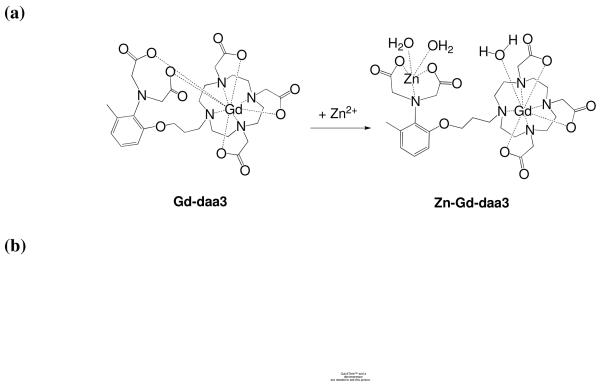Figure 5.
(a) Proposed mechanism of a Zn(II)-responsive MR contrast agent. The coordinating acetate arms internally rearrange to bind Zn(II) which opens a coordination site on the Gd(III) center and therefore increases relaxivity. (b) Left: Gd-daa3 Selectivity. T1-weighted MR images of a 1 mM solution of Gd-daa3 in HEPES buffer. (A) HEPES buffer; (B) Gd-daa3; (C) Gd-daa3 with 1 mM ZnCl2; (D) Gd-daa3 with 1 mM MgCl2; (E) Gd-daa3 with 1 mM CaCl2. (b) Right Gd-daa3 Sensitivity. T1-weighted MR images of a 1 mM solution of Gd-daa3 in HEPES buffer with varying zinc concentrations. (A) 0μM Zn; (B) 50 μM Zn; (C) 100 μM Zn; (D) 500 μM Zn; (E) 1 mM Zn.

